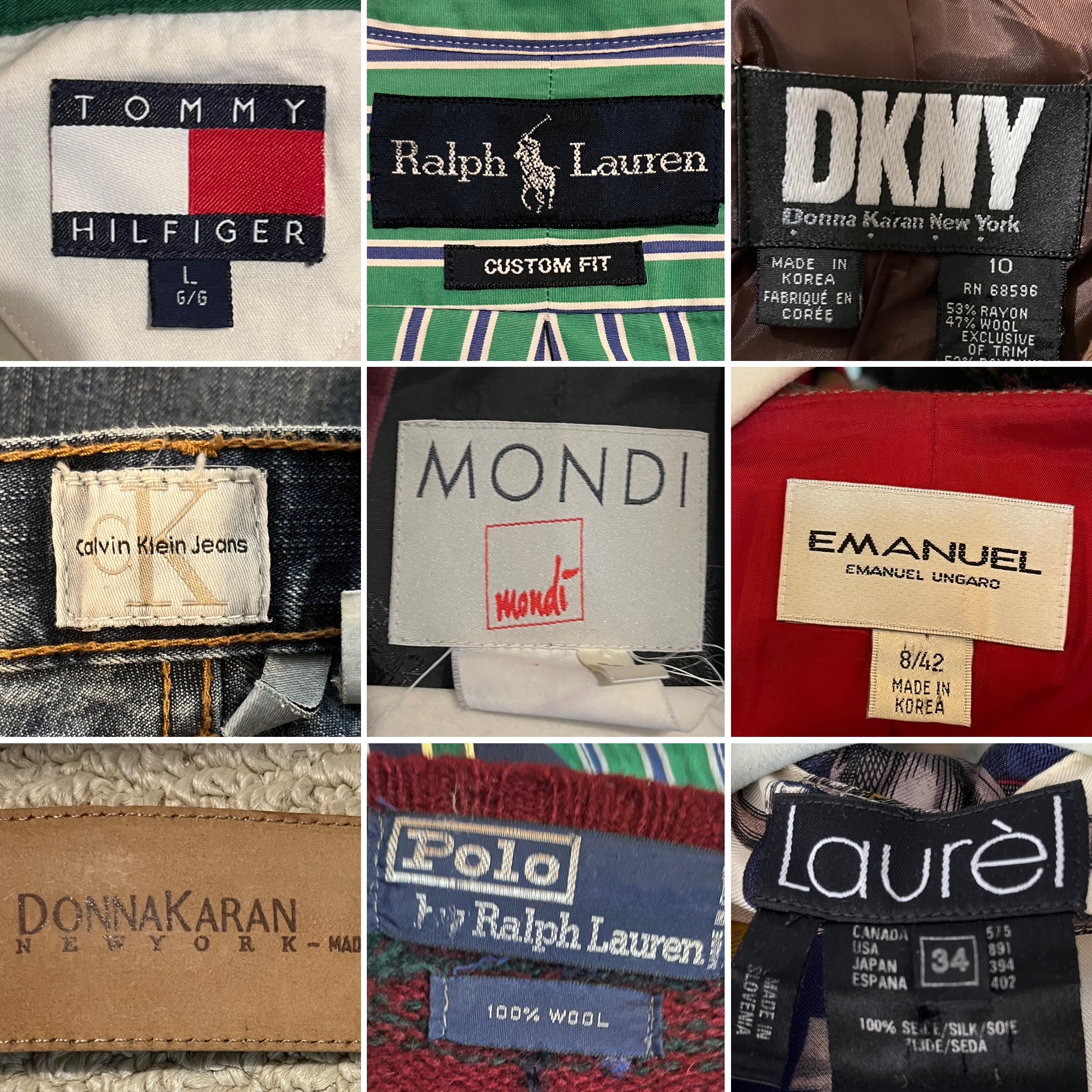The Best Fabrics to Look for in Branded Clothing for Summer
The Best Fabrics to Look for in Branded Clothing for Summer
Blog Article
Understanding Apparel: The Significance of Textile Selections in Your Wardrobe
The selection of textile in clothes plays an essential function in both visual appeals and functionality. Various products offer varying levels of breathability, longevity, and convenience, directly affecting the wearer's experience. Understanding these subtleties can enhance one's wardrobe significantly. Yet, numerous ignore exactly how these choices can impact not just personal style, yet likewise sustainability. What material choices could redefine your wardrobe and straighten it with both design and responsibility?
The Role of Material in Fashion and Functionality

Typical Fabric Types and Their Features
When selecting clothes, understanding the attributes of typical textile types is vital for making notified selections. Cotton, a widely-used all-natural fiber, is understood for its soft qualities, breathability, and adaptability, making it ideal for casual wear and day-to-day garments. Linen, another all-natural choice, flaunts exceptional moisture-wicking residential or commercial properties and a distinct texture, ideal for cozy climates.Wool, often favored for its heat and sturdiness, varies in excellence; merino wool is soft versus the skin, while coarser types are made use of for outerwear. Artificial materials like polyester and nylon supply sturdiness and resistance to wrinkles, making them prominent for activewear and travel garments. Blends, which incorporate all-natural and artificial fibers, can boost functionality while maintaining convenience. By acknowledging these fabric features, people can pick garments that straightens with their way of living and visual choices.
Breathability and Comfort: Choosing the Right Fabrics for Different Environments
Picking the right fabrics for various climates can substantially improve comfort and overall wearability. Breathable materials are vital in hot climates, as they allow air flow and dampness dissipation. Fabrics such as cotton, linen, and moisture-wicking synthetics properly attract sweat away from the body, keeping the user cool and dry. Alternatively, in cooler climates, thicker textiles like wool or fleece give insulation while preserving breathability, ensuring heat without overheating.Additionally, the option of material weight plays a crucial role; light-weight textiles are more suitable for summertime, whereas heavier alternatives are suited for winter wear. Comprehending the one-of-a-kind homes of each material makes it possible for individuals to clothe properly for differing weather problems. Ultimately, choosing comfortable and breathable materials customized to certain climates can greatly boost everyday comfort and improve the overall experience of putting on clothing.
Toughness and Care: How Textile Affects Durability of Your Closet
Selecting the best products can considerably impact the sturdiness and treatment requirements of a wardrobe. Fabrics such as cotton and polyester are recognized for their resilience and ease of upkeep, making them optimal for day-to-day wear. On the other hand, fragile materials like silk and lace call for even more mindful handling and specialized cleaning methods, which can increase the moment and initiative needed for care. Branded Clothing.Durability is also affected by the fabric's weave and surface; tightly woven fabrics tend to withstand deterioration better than freely woven options. Furthermore, synthetic blends frequently offer improved resilience, combining the most effective qualities of several fibers.Understanding the treatment guidelines for each and every material is crucial, as incorrect cleaning or drying out can bring about early wear. Eventually, selecting resilient products can result in a longer-lasting closet, minimizing the frequency of replacements and contributing to a more sustainable style selection
The Effect of Material on Fit and Shape

Sustainable Fabric Selections: Making Eco-Friendly Decisions
The effect of textile expands past fit and shape to encompass ecological elements, prompting an expanding rate of interest in lasting textile choices. Environment-friendly textiles, such as natural cotton, hemp, and Tencel, are gaining grip amongst consumers that prioritize sustainability in their closets. These products are typically generated with less chemicals and water, decreasing their ecological footprint.Additionally, recycled fabrics, made from post-consumer waste, offer a cutting-edge option to the fabric industry's pollution problem. Brands progressively accept transparency in their sourcing methods, allowing consumers to make educated decisions about their purchases.Choosing sustainable materials not only sustains moral practices yet also encourages the garment industry to embrace more liable manufacturing approaches. As awareness of environmental issues climbs, people are urged to review the lasting impact of their fabric selections, cultivating a motion towards a much more lasting and ecologically conscious strategy to style.
Elevating Style: Just How Textile Can Transform an Outfit
While many might concentrate on color and cut when selecting a clothing, the choice of fabric plays an important role in boosting style and improving total appearance. Various products share distinctive state of minds and messages; for instance, silk exudes deluxe and refinement, while denim offers a laid-back, loosened up vibe. The structure and drape of a textile can drastically modify the silhouette, with organized fabrics providing a polished look and softer ones producing a more fluid, unwinded aesthetic.Moreover, the weight of the fabric affects wearability across seasons. Lightweight fabrics like bed linen and cotton are ideal for summer, while larger products such as woollen and velour give heat and beauty in chillier months. Recognizing material residential or commercial properties, such as breathability and stretch, likewise equips people to make enlightened selections that improve comfort without compromising style. Eventually, the best textile can transform a clothing from ordinary to extraordinary, making it an Website important consideration in any wardrobe.
Regularly Asked Concerns
Exactly how Do I Determine the Material Web Content of My Clothing?
To recognize fabric content, one can take a look at treatment labels, conduct shed tests for fiber identification, or seek advice from material swatches. These methods assist differentiate products, making certain informed selections for apparel treatment and maintenance in daily wear.
Can Textile Selection Affect My Mood or Self-confidence?
Fabric choice can substantially influence a person's state of mind and confidence. Branded Clothing. Specific products may stimulate sensations of convenience or beauty, while others can really feel limiting or unflattering, eventually influencing self-perception and emotional health throughout the day
What Fabrics Are Best for Delicate Skin?
For individuals with delicate skin, natural textiles like bamboo, cotton, and linen are commonly suggested. These products are breathable, hypoallergenic, and less likely to create irritation, making them ideal selections for convenience and skin health.
Just how Do I Properly Laundry and Look After Various Fabrics?
To correctly clean and care for various fabrics, one need to think about each product's details demands, including temperature level settings, detergents, and drying out techniques, ensuring long life and keeping the textile's initial high qualities for perfect usage.
Exist Details Fabrics for Athletic or Performance Wear?
Sports or efficiency wear commonly uses materials such as spandex, nylon, and polyester. These products are created for moisture-wicking, breathability, and versatility, enhancing activity and convenience during exercises while supplying toughness and assistance. On the other hand, in colder environments, thicker materials like woollen or fleece provide insulation while maintaining breathability, making sure warmth without overheating.Additionally, the selection of material weight plays a vital duty; lightweight fabrics are more suitable for summer, whereas heavier options are matched for winter season wear. In contrast, fragile products like silk and shoelace need more mindful handling and specialized cleansing approaches, which can boost the time and effort needed for care.Durability is likewise influenced by the fabric's weave and finish; securely woven textiles have a tendency to stand up to wear and tear far better than loosely woven choices. In contrast, inflexible fabrics can restrict motion however give a timeless, sleek look.Moreover, the density and structure of the material can affect the aesthetic perception of body shape. The influence of textile extends beyond our website fit and shape to incorporate environmental aspects, motivating a growing rate of interest in sustainable fabric options. The structure and drape of a textile can substantially change the silhouette, with structured textiles offering a sleek appearance and softer ones creating a much more fluid, loosened up aesthetic.Moreover, the weight of the material affects wearability throughout seasons.
Report this page